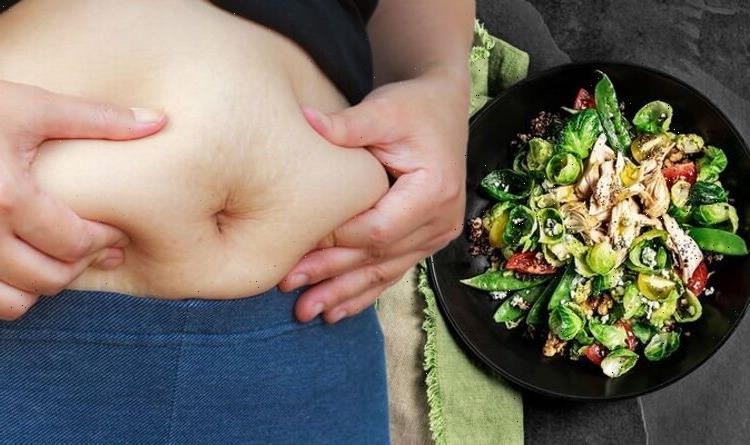How to reduce visceral fat: The 43p food that can help you to ‘lose stomach fat fast’
Dr Zoe Williams discusses visceral fat on This Morning
We use your sign-up to provide content in ways you’ve consented to and to improve our understanding of you. This may include adverts from us and 3rd parties based on our understanding. You can unsubscribe at any time. More info
Visceral fat poses grave health risks because it neighbours important organs such as the liver, stomach, kidneys, and intestines. From this position it can launch an attack, increasing the risk of chronic conditions such as type 2 diabetes, high blood pressure and heart disease. Fortunately, you can banish the harmful belly fat by making simple dietary modifications.
Specific dietary decisions can even burn the belly fat fast.
According to Holland and Barrett, “from a diet perspective, if you want to lose stomach fat fast, stick to foods with the least number of calories”.
The health body cites green salads as a low-calorie item that can aid this effort.
Evidence published in the Journal of the Academy of Nutrition and Dietetics bears out this claim.

The researchers in the study pointed out that there is “limited data” on the impact of vegetable consumption on visceral fat, specifically non-starchy vegetables and vegetables that are dark green and deep orange/yellow.
The study – involving 175 overweight participants – examined the relationship between vegetable intake and visceral fat in overweight Latino youth.
From 2006 to 2011, data was collected from dietary intake and weight measurements were recorded via magnetic resonance imaging (MRI).
MRI is a medical imaging technique that uses a magnetic field and computer-generated radio waves to create detailed images of the organs and tissues in your body.
DON’T MISS
Morgan Freeman health: ‘It hasn’t gotten better’ – star’s ‘agony’ [INSIGHT]
How often do you shower? You could be weakening immune system [TIPS]
Dementia: The sign when walking – may precede memory loss [ADVICE]
What did the researchers find out?
Participants who consumed the most non-starchy vegetables compared to the least had 44 percent less liver fat.
What’s more, consumers of non-starchy vegetables, compared to non-consumers, had 17 percent less visceral fat.
Examples of non-starchy vegetables include:
- Cabbage
- Celeriac
- Cucumber
- Choy
- Radishes
- Pumpkin
- Kale
- Swede
- Squash
- Lettuce.
Other important dietary tips
Protein can also deal a decisive blow to the belly fat.

Bupa explains: “Protein can be a helpful way to lose weight because it makes you feel fuller than carbs and fat do.”
If you include a lean source of protein in your meals you may therefore find that you’re not as hungry, and so eat less.
Good sources include:
- Chicken breast
- Tuna
- Mackerel
- Salmon
- Eggs
- Milk.
According to Bupa, you should opt for foods that are rich in protein and low in fat (known as lean protein sources) as some sources of protein can be high in saturated fat.

“Alternatively, there are lots of protein products on the market, such as supplements and powders, but if you decide to use these make sure you have a trained sports dietitian or nutritionist supervising your diet.”
Studies have also shown that you can help trim visceral fat or prevent its growth with both aerobic activity (such as brisk walking) and strength training (exercising with weights).
“Spot exercises, such as sit-ups, can tighten abdominal muscles but won’t get at visceral fat,” notes Harvard Health.
The health body adds: “Exercise can also help keep fat from coming back.”
Source: Read Full Article
